100+ Science Books to Support STEM Learning at Home & in the Classroom
Science Books to Support Self-Directed Learning & Interests
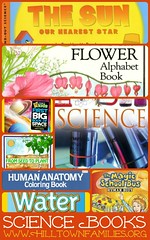 Experience is always the best teacher – and this is especially true for children! However, when kids are eager to learn about a topic, the lessons available might leave some space for supplementation. After you’ve explored the woods, caught critters, messed about with materials, and exercised all five of your senses together, it might be time to turn to print materials to help kids add specific language and detail to their understanding of scientific topics. And, in addition to being filled with lots of useful and fascinating information, science-themed books give children valuable practice reading and interpreting non-fiction material – a skill that will allow them to develop strong skills for self-teaching and answering their own questions.
Experience is always the best teacher – and this is especially true for children! However, when kids are eager to learn about a topic, the lessons available might leave some space for supplementation. After you’ve explored the woods, caught critters, messed about with materials, and exercised all five of your senses together, it might be time to turn to print materials to help kids add specific language and detail to their understanding of scientific topics. And, in addition to being filled with lots of useful and fascinating information, science-themed books give children valuable practice reading and interpreting non-fiction material – a skill that will allow them to develop strong skills for self-teaching and answering their own questions.
Whatever topic children are learning about, there is age- and reading level-appropriate materials available. And, thanks to the creativity of children’s authors and illustrators, they’re not only informative but engaging and filled with photographs, diagrams, drawings, and other visuals that children in comprehending text.
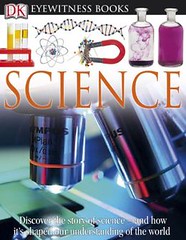 Some of the best variety in science-related reading materials is offered by a series of books, most of which are made up of books that share a standard format. Learners of all ages are easily fascinated by the DK Eyewitness Science series, which covers everything from robots and crystals to lightning and electricity. The books offer large, vibrant photographs that allow children to examine fine detail alongside informative captions and moderately thick sections of text that further explain what’s shown with visuals. Children can quickly learn from the books whether or not they read them at all, and even older students can spend hours perusing the pages of the books to glean as much as they can from each section of text.
Some of the best variety in science-related reading materials is offered by a series of books, most of which are made up of books that share a standard format. Learners of all ages are easily fascinated by the DK Eyewitness Science series, which covers everything from robots and crystals to lightning and electricity. The books offer large, vibrant photographs that allow children to examine fine detail alongside informative captions and moderately thick sections of text that further explain what’s shown with visuals. Children can quickly learn from the books whether or not they read them at all, and even older students can spend hours perusing the pages of the books to glean as much as they can from each section of text.
 Similarly, the Dover Children’s Science Books coloring book series pairs visuals with text in a way that makes learning accessible to a variety of ages. Young children can learn about the shapes and structures found inside the human body by coloring in a rainbow skeleton, while older students may read the names and descriptions of body parts while carefully adding accurate color to the pages.
Similarly, the Dover Children’s Science Books coloring book series pairs visuals with text in a way that makes learning accessible to a variety of ages. Young children can learn about the shapes and structures found inside the human body by coloring in a rainbow skeleton, while older students may read the names and descriptions of body parts while carefully adding accurate color to the pages.
 For fiction-lovers, The Magic School Bus series pairs fun (and a little fantasy) with all sorts of scientific topics. Each book chronicles the adventures of Ms. Frizzle – a zany third-grade teacher – and her students who, on any given school day, might blast off into space and explore the planets or turn into bees and become part of a hive.
For fiction-lovers, The Magic School Bus series pairs fun (and a little fantasy) with all sorts of scientific topics. Each book chronicles the adventures of Ms. Frizzle – a zany third-grade teacher – and her students who, on any given school day, might blast off into space and explore the planets or turn into bees and become part of a hive.
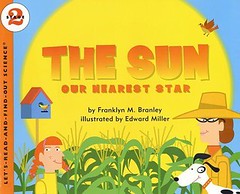 Harper Collins’ Let’s Read and Find Out series is a similar resource, offering non-fiction books with a fiction-y feel to young readers. Authors in the series include some children’s literature greats (like Aliki!), and many titles are available in Spanish in addition to English.
Harper Collins’ Let’s Read and Find Out series is a similar resource, offering non-fiction books with a fiction-y feel to young readers. Authors in the series include some children’s literature greats (like Aliki!), and many titles are available in Spanish in addition to English.
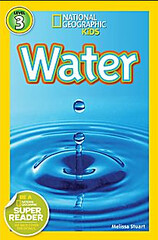 Young readers will also enjoy the National Geographic Readers and National Geographic First Big Books series. Using the vibrant, up-close-and-personal photographs that National Geographic is known for, the books in each series provide a graphically beautiful learning experience. While the books aren’t dense in terms of text, they include lots of topic-specific vocabulary and offer readers practice understanding and using new words.
Young readers will also enjoy the National Geographic Readers and National Geographic First Big Books series. Using the vibrant, up-close-and-personal photographs that National Geographic is known for, the books in each series provide a graphically beautiful learning experience. While the books aren’t dense in terms of text, they include lots of topic-specific vocabulary and offer readers practice understanding and using new words.
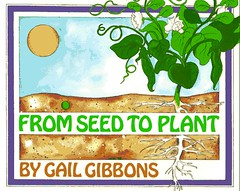 In addition to these information-rich series of titles, there are a few children’s authors whose work stands out amongst the many non-series science books that have been published. Author Gail Gibbons has written hundreds of non-fiction books, the majority of which are science-centric. Her work includes titles on everything from cycles of the moon to how seeds grow, and the books encourage readers to examine their own surroundings and pursue further experiential learning about each topic.
In addition to these information-rich series of titles, there are a few children’s authors whose work stands out amongst the many non-series science books that have been published. Author Gail Gibbons has written hundreds of non-fiction books, the majority of which are science-centric. Her work includes titles on everything from cycles of the moon to how seeds grow, and the books encourage readers to examine their own surroundings and pursue further experiential learning about each topic.
 Massachusetts author Jerry Pallotta’s work consists mainly of ABC books that expose young readers to the basics of topics like the Atlantic Ocean, species extinction, and desert ecosystems. The simple format of each book encourages readers to remember specific terms and ideas, as they’re highlighted by the letter assigned to each page.
Massachusetts author Jerry Pallotta’s work consists mainly of ABC books that expose young readers to the basics of topics like the Atlantic Ocean, species extinction, and desert ecosystems. The simple format of each book encourages readers to remember specific terms and ideas, as they’re highlighted by the letter assigned to each page.
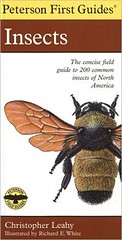 Finally, one of the most useful science texts your family will every use is, of course, a field guide! Fascinating to read at home and even more interesting when used on an outdoor adventure, are field guides. Guides teach users not only to identify the species of plants and animals that they see, but they encourage budding naturalists to start paying closer attention to detail – the shape of shrub leaves, perhaps, or the type of tree on which they spotted a particular insect. There are many, many excellent field guides, but Petersen Field Guides’ First Guides series is perhaps the most useful for families with children who are just learning to use field guides as a resource. Offering images and descriptions that are just detailed enough to allow youngsters to do some of their own ID-ing, the guides are a fantastic source of information.
Finally, one of the most useful science texts your family will every use is, of course, a field guide! Fascinating to read at home and even more interesting when used on an outdoor adventure, are field guides. Guides teach users not only to identify the species of plants and animals that they see, but they encourage budding naturalists to start paying closer attention to detail – the shape of shrub leaves, perhaps, or the type of tree on which they spotted a particular insect. There are many, many excellent field guides, but Petersen Field Guides’ First Guides series is perhaps the most useful for families with children who are just learning to use field guides as a resource. Offering images and descriptions that are just detailed enough to allow youngsters to do some of their own ID-ing, the guides are a fantastic source of information.
UD020719gr
 Hilltown Families
Hilltown Families 





























Here is another: The Natural History of Western Massachusetts it is a great local book about our beautiful area. I was able to get a copy at a2z in Northampton.